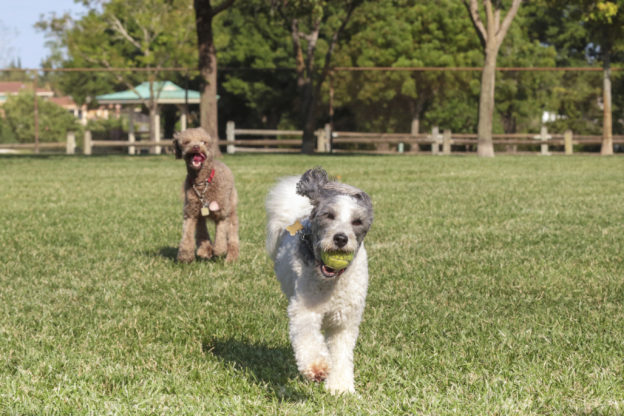If you’ve ever been responsible for your tradeshow lead count, I guarantee that at some point during the show you wished you had some way to keep the attendees who ventured into your exhibit from deftly slipping away before you could meaningfully connect with them … and count them.
For me, the solution has been an electric dog fence. You know the kind … your dog wears a collar and receives a mild “shock” if they cross an electronic line buried around the edge of your yard? I’ve extended this to tradeshows; when attendees enter my exhibits, I just slip one of those collars onto them, and if they try and leave before I want them to …?
You can stop typing angry comments … I’ve never done this to my attendees … or to my dogs for that matter. But it’s a pleasant daydream.
Of course, a much less “stingy” way to keep attendees in your exhibit is to put into place a clearly defined engagement process.
How can this help? Well, for many booth staffers, an “engagement process” means greeting an attendee, asking an open-ended question, and being a good listener. And that’s about it.
Don’t get me wrong … those two things are extremely important … but … then what? What do you do AFTER an attendee has answered (or not answered) your initial open-ended question? What is keeping them from leaving your exhibit?
This is where the word “PROCESS” takes center stage. Exhibitors must not only assume an open posture and engage attendees, they must have clearly defined next steps.
Which brings us to another pitfall; a “next step” cannot simply be “something else to do.” A “process” is not simply a series of steps or actions; these steps must build on one another, and increase in relevance for the attendee. Let me iterate that; attendees must feel that every additional thing they’re doing in an exhibit is moving them toward a more specific, well-defined objective.
Most of the time, that objective is learning about a solution that will help them with a SPECIFIC challenge. Having 4 or 5 “things to do” in the exhibit doesn’t accomplish this; those “things” need to be steps along a path toward deeper engagement & education.
A simple way to accomplish this is to think of your booth engagements as an “If-Then” flow chart.
Your initial engagements should help you learn more about the attendee so you can guide them another activity of greater relevance. You may have two or three options at this point, and the initial engagement helps you choose the most relevant next step. This could be a targeted case study or a demo, etc.
When the attendee feels that they are being offered information of increasing relevance and usefulness, they will start driving the car and assume an active role in learning more … they become the SEEKER. This makes your job much easier.
Lastly, “process” shouldn’t be confused with “procedure.” “Procedure” refers to the steps needed to accomplish a single task; “process” is all encompassing, and allows booth reps to guide attendees further into your exhibit, and further into your brand.
Of course, a “well-defined process” should also include escape hatches where you can easily and respectfully close an interaction if an attendee reveals themselves to be not qualified. This is the HALLMARK of a good process; it separates the wheat from the chaff, and maximizes the rep’s time in the exhibit. Apologies to anyone I just called ”chaff.”
If you take the time to define a clear process, your qualified leads will increase, and your in-booth frustration will decrease.
And of course, you can always keep that electric fence idea in your hip pocket for special occasions.


